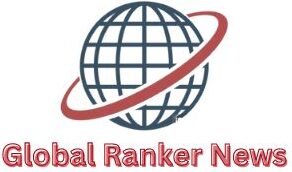SSIS 816 is in fact a particular instance of the multiple tools referred to as SQL Server Integration Services or simply SSIS. It is the foundation through which organizations can effectively extract information from multiple sources, transform it and load it in other destinations.
Key Features and Capabilities
SSIS 816 offers a comprehensive set of features to streamline data integration processes:
- Data Extraction:
- It was interfaced with multiple sorts of data sources including databases (SQL Server, Oracle, MySQL), flat files, spreadsheets and so on.
- To search for data defined according to certain parameters or any data at all.
- Data Transformation:
- Opens, changes, and consolidates data to satisfy the company’s needs.
- Engines used for handling data conversions, calculations and other relevant types of manipulations.
- Incorporates more specific operations with objects and their features of derived type by means of columns, expressions and scripts.
- Data Loading:
- Writes data to different locations such as a database, flat files, excel or others systems as required.
- It supports bulk loading to enhance its functioning at a faster rate.
- Provides features such as the choice of performing half load as well as full load.
- Package Management:
- Develops, administers, and implements SSIS packages for optimized operation.
- Offers version control and configuration management facilities.
- Allows for the management of the processes and time at which data integration occurs.
- Error Handling and Logging:
- Ensures that proper mechanisms that will prevent failure and loss of information are put in place.
- Records data about the execution of packages for debugging and for tracking purposes.
Real-World Applications
SSIS 816 finds applications across various industries and business scenarios:
- Data Warehousing: Extracts and loads (E/L) data from the source operational systems into data marts or data warehouses that are used to develop and support data warehouses.
- Data Migration: Allow for the migration of data from one system, database, platform to another.
- ETL Processes: Runs data extraction, transformation, and loading processes and optimizes every improvement possible.
- Data Cleansing: Enhances the quality of data in the organization since poor data like weird data, duplicate data, and erroneous data is eliminated.
- Data Integration: Merges the information into a single context, sometimes called a single window of truth.
- Reporting and Analysis: Cleans data for reporting and analysis by reformatting it in to the best format that can be used.
Benefits of Using SSIS 816
- Improved Data Quality: Another facet of data preparation is data cleansing and data transformation to ensure that the data gonna be analyzed is clean and free from any form of errors or inconsistency.
- Increased Efficiency: Reduces the time and efforts that would be required in manual data integration tasks.
- Scalability: Is able to process large amounts of data as well as work with intricate integration processes.
- Flexibility: Subscribes to the requirements of the changing data and the business in equal measure.
- Cost-Effective: Cuts down drudgery work and cost that necessitates it.
- Better Decision Making: Supports the management in decision making by presenting timely and accurate information.
Challenges and Considerations
While SSIS 816 is a powerful tool, it’s essential to address potential challenges:
- Complexity: SSIS packages can grow big and getting around and managing them may need the services of a professional.
- Performance: Perhaps, the process of data integration on a really big scale may involve some optimization.
- Error Handling: Error handling should be the strongest link of the program, designed to avoid the loss of any data.
- Maintenance: It must be emphasized that these updates require constant check-ups and revisions in order to run efficiently and effectively.
Best Practices for SSIS 816
To maximize the benefits of SSIS 816, consider the following best practices:
- Organize the design packages in logical order that also makes for efficient packaging.
- Indexing, partitioning and bulk loading are methods used to manage your performance.
- Use proper and efficient ways of error handling and tracking.
- Ensure packages are well tested and optimized just before deployment to the system.
- Among the possibilities is the use of SSIS packages as part of a large integrated data management framework.
Conclusion
SSIS 816 is perfectly suitable for the use in organizations that would like to have the tools to establish a successful data integration. When the users are aware of the characteristics and potential, and how to use it effectively, then it can be serious business tool for elicit value from data.

